July is a great month to be on the water around Brisbane. The action can be hot, with multiple species available.
The wet start to the year had all the rivers and creeks running brown for quite a while.
Yet the rain stopped and the start of winter kicked off with a bang.
The rivers have cleaned up nicely, which has allowed baitfish and predators to get back into the upper reaches.
This gives anglers more areas to search for preying fish, instead of being forced to fish around the mouths of rivers and creeks.
Species such as threadfin salmon, jewfish, flathead, grunter, tailor and bream will all be available in the middle to upper reaches this month.
Currently the rivers are full of small jewfish ranging from 30cm up to legal fish.
I haven’t been able to find a legal fish yet, but there should be a few getting about.
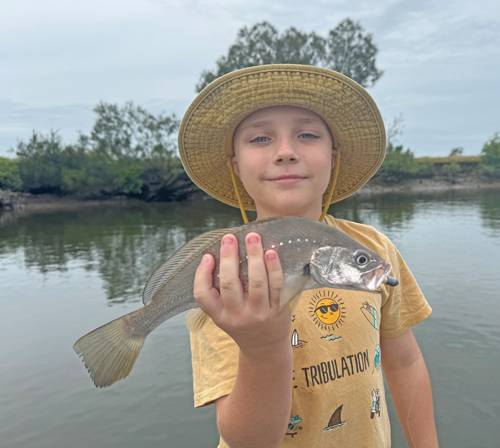
They must have had an excellent spawning period recently, as it’s not uncommon to land double figures of small jewies in each session.
Threadfin salmon numbers are also looking promising.
I’ve been sounding up some big fish in the middle reaches of the rivers and plenty of smaller fish of just legal size are getting around.
Bigger threadfin can be difficult to get a bite from when they’re not feeding aggressively.
They can be a little leader shy and are capable of rubbing through leaders up to 30lb in a couple of seconds.
I tend to keep my leaders light, so I get the by-catch that feed in the same areas.
If you can get a hook in the threadfin’s mouth, it’s possible to land a big fish.
It can take a little of luck, along with some skill.
Threadfin salmon are known for changing direction very quickly during the fight.
Many anglers may think they’ve lost the fish, but it has simply turned around and started to swim straight back at them.
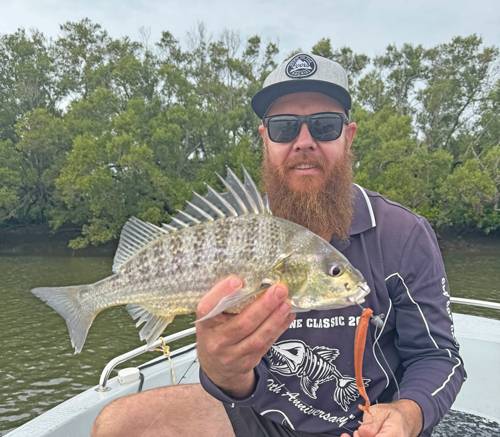
It’s very important it keep pressure on the fish at this stage, so that the hook doesn’t fall out.
Grunter have made an appearance in good numbers in the middle to upper reaches too. They are one of my favourite fish to target.
They fight hard and are absolutely delicious on the plate.
As they are a schooling fish, once you find one, there’s a good chance there are more in the area.
Flathead will turn up almost everywhere this month.
The deep bends will hold some good quality fish.
They are a very common by-catch when targeting bigger species such as jewfish and threadfin.
Speaking of bigger fish… sharks were still causing problems upstream.
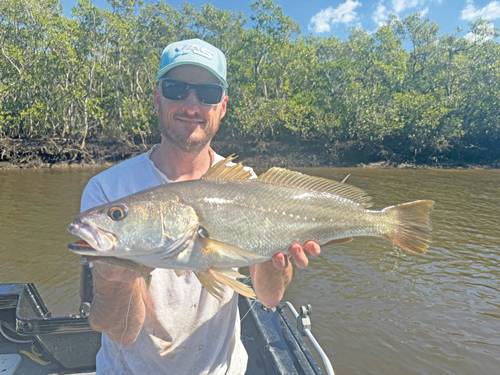
On my last trip, we had three big bull sharks follow us back and forth between three different bends.
I can’t be sure they were the same sharks, but it gives you an idea of how many big sharks are following boats around in the rivers these days.
The maximum size limit on these pests definitely needs to be looked at – it’s currently illegal to target a shark over 1.5m.
The bullies following my boat were bigger than the maximum size limit, which meant that if we had caught them, we would have had to release them.
The mouths of the rivers have had some hot action recently and this will continue into July.
Tailor were in big numbers and in excellent quality. species
I’ve come across some big schools in the 50-55cm range around the mouth of Bribie Island.
There were also many between the mouth of the Caboolture River and Bribie.
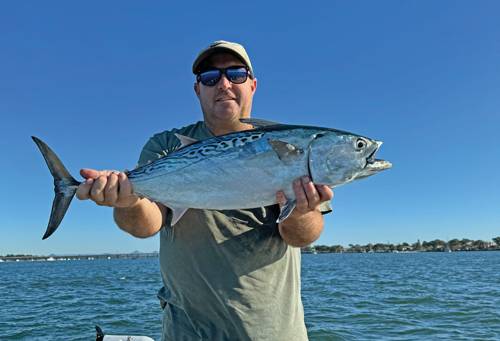
Mack tuna have been in the same areas and pushing well into the passage.
I haven’t seen any longtail tuna yet, but having seen them in past years, fingers are crossed they turn up too.
Though the tuna schools disappear as quickly as they turn up, particularly when there were a few boats about.
It surprises me that some people still motor straight up to the school with their two-stroke outboard.
Then they throw an 80g slug on a wire trace at a school that went down 20 seconds before they got there.
Tuna can be very difficult to get to bite from, so a bit of finesse may be required to hook a fish.
Give the wire trace a miss and keep your leader around 20-30lb and you’ll get more bites.
The smallest metal slug you can cast will get many more bites than a 60-80g slug.
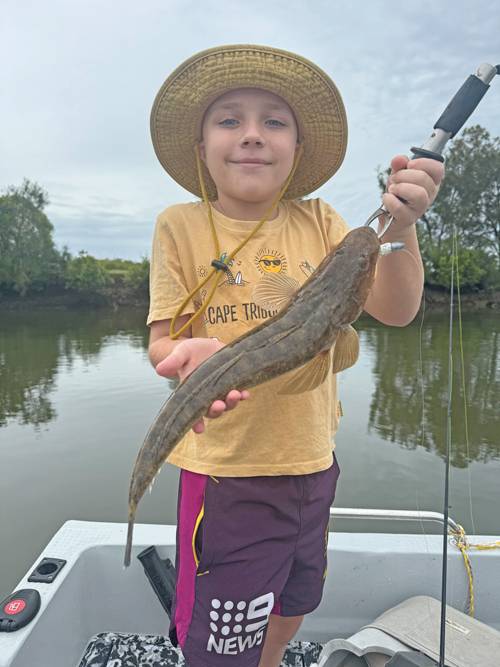
If the fish are going down as soon as you approach them, try sitting back and working out which way they’re travelling and feeding.
You can generally work out a pattern and position your boat so that the fish will be headed in your direction.
And once you hook a tuna, you then have to keep it away from the sharks.
The tailor schools were a lot easier to approach – staying up and continuing to feed around the boat.
Tailor aren’t everyone’s favourite fish to eat but remember, they make excellent reef bait and the frames are one of the better crab bait.
That’s it from me for now.
Get your jumpers and beanies out and get among some of the action that July has to offer.
 Bush ‘n Beach Fishing Magazine Location reports & tips for fishing, boating, camping, kayaking, 4WDing in Queensland and Northern NSW
Bush ‘n Beach Fishing Magazine Location reports & tips for fishing, boating, camping, kayaking, 4WDing in Queensland and Northern NSW









